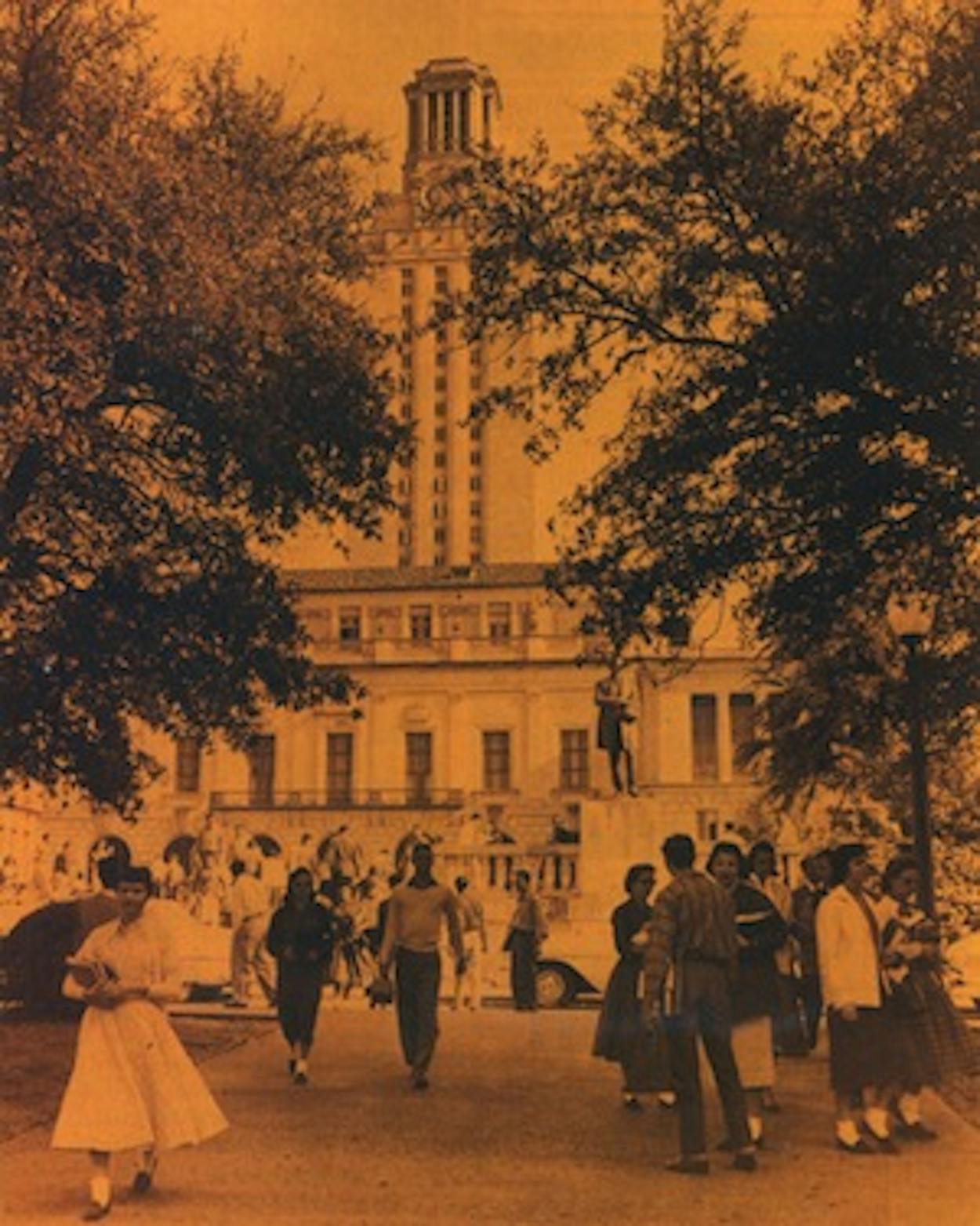FEW TEXAS BUILDINGS have such a towering reputation. Since its completion in 1937, the University of Texas Tower, 307 feet high, has dominated both the campus and the Austin skyline. Because of sniper Charles Whitman, it also looms large in the annals of American crime. But it was a series of suicides that prompted university officials to close the twenty-seventh-floor observation deck in 1975. Last month UT finally reopened the deck, after installing stainless-steel latticework as a barricade. The decision was doubly farsighted: It marks the current administration’s willingness to look ahead, and it returns to the public a panorama of a beautiful university and a bustling city that sprawls as far as the eyes of Texas can see.
French architect Paul Cret designed the Main Building and the Tower in the Spanish Renaissance style. The Tower clock, more than twelve feet in diameter, is covered in gold leaf. From six-fifteen in the morning until eight at night, the 56-bell Tower carillon plays the Westminster Chime, adding four notes each quarter hour.
From the beginning, orange light has flooded the Tower to mark football victories. UT later started illuminating the Tower for other big events too, such as chemistry professor Ilya Prigogine’s 1977 Nobel prize.
In 1965 sparks from a workman’s tools started a fire on the twentieth floor, destroying part of the theater arts archives. (The Harry Houdini collection, however, escaped.)
On August 1, 1966, a 25-year-old student lugged high-powered weapons onto the observation deck and started shooting. Charles Whitman, a former Eagle Scout and marine, killed 14 people and wounded 31 before Austin police officers shot him dead. He had earlier murdered his mother and wife. The crime inspired Peter Bogdanovich’s 1968 debut film, Targets, as well as Kinky Friedman’s 1973 song “The Ballad of Charles Whitman” (“He was sittin’ up there with his .36 Magnum/Laughin’ wildly as he bagged ’em/Who are we to say the boy’s insane?”).
Nine other deaths—two accidental falls and seven suicides—caused officials to debate adding a barricade to the observation deck in the early seventies. Frank C. Erwin, the chairman of the board of regents, pooh-poohed the idea, declaring that “if people want to commit suicide, they can just as easily do it from the top of the new stadium.”
In 1996 Rosa A. Eberly began teaching a course called “The UT Tower and Public Memory,” which examines, in part, the enduring image of Whitman as American antihero.








